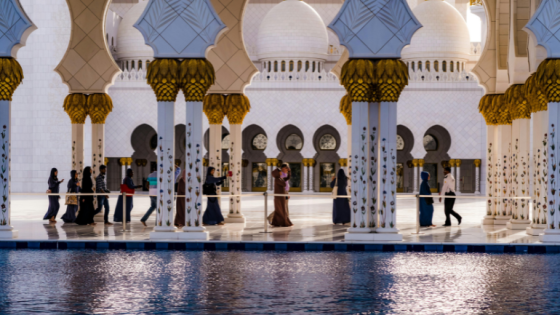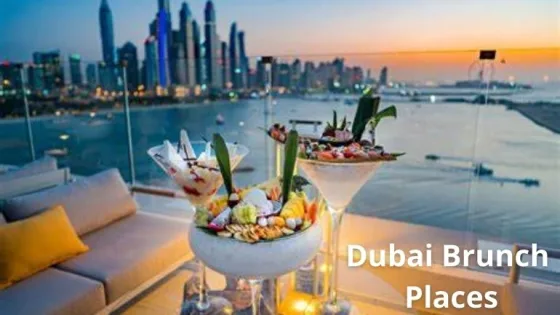Contents
The United Arab Emirates (UAE), known for its cosmopolitan cities like Dubai and Abu Dhabi, is not only a hub of architectural marvels and technological advancements but also a country that cherishes its green spaces. Despite being predominantly urban, the country has made significant efforts to create and preserve public UAE green spaces that seamlessly blend with the surrounding nature. This article explores the UAE’s commitment to nurturing green spaces, showcasing how cities like Dubai and Abu Dhabi have embraced sustainable development while maintaining their cultural heritage.
Dubai Green Oasis
Dubai, often referred to as the epitome of modernity, has not overlooked the importance of UAE green spaces within its urban landscape. The city boasts numerous public parks and gardens that offer respite from the hustle and bustle of city life. One such prominent green oasis is the Creek Park, situated along Dubai Creek. This expansive park, spanning over 96 hectares, offers lush green lawns, play areas, and recreational facilities, making it a favorite spot for families and fitness enthusiasts alike.
Abu Dhabi’s Nature Retreats

Abu Dhabi, the UAE’s capital, is another city that recognizes the significance of nature in an urban setting. The city’s dedication to preserving green spaces is evident in projects such as Masdar City. Spearheaded by Sheikh Mohammed bin Rashid Al Maktoum, Vice President and Prime Minister of the UAE, and Ruler of Dubai, Masdar City stands as a testament to sustainable urban planning. This futuristic development incorporates renewable energy sources and green building practices while maintaining a harmonious coexistence with nature. The city features pedestrian-friendly streets, ample cycling paths, and green parks, allowing residents and visitors to connect with nature seamlessly.
Read more: Dubai Sports Events
Best UAE green spaces

Here are the top 10 parks and natural attractions to visit when your destination is green spaces in UAE:
- Mushrif Park.
- Safa Park.
- Al-Qurda Lake.
- Mangrove National Park.
- Dubai Miracle Garden.
- Dubai creek.
- Al Mazar Beach Park.
- Khalifa Park.
- Corniche Parks.
- Umm Al Emarat Park.
Read more: UAE bird watching spots
The Vision of Sheikh Zayed
The UAE’s commitment to green spaces can be traced back to its founding father, Sheikh Zayed bin Sultan Al Nahyan. Inspired by his love for the land and the environment, Sheikh Zayed spearheaded initiatives to transform the arid desert into a thriving ecosystem. His vision laid the foundation for the country’s emphasis on sustainability and the creation of green spaces throughout the UAE. Today, his legacy continues to shape the nation’s commitment to preserving its natural heritage.
UAE Green Spaces; Preserving Biodiversity

In addition to public parks and gardens, the UAE is also home to protected areas that safeguard its unique biodiversity. The country’s coastline, stretching along the Arabian Gulf, is dotted with pristine beaches, many of which have been preserved as natural reserves. These coastal reserves not only serve as vital breeding grounds for marine life but also provide opportunities for visitors to enjoy recreational activities while appreciating the beauty of nature.
Communities in Harmony with Nature
The UAE’s dedication to green spaces extends beyond individual projects. The country envisions the development of sustainable communities that harmoniously blend with the natural environment. From carefully planned residential neighborhoods to innovative urban designs, the UAE strives to create living spaces that encourage a healthy and balanced lifestyle. Parks, landscaped gardens, and tree-lined streets are integrated seamlessly into these communities, providing residents with a closer connection to nature.
Read more: UAE Public Holidays 2023
Are there any green spaces in Dubai?
Yes, there are many including Safa Park, Dubai Miracle Garden, and Creek Park.
Which part of UAE is the greenest?
Al Ain Oasis in Abu Dhabi.
UAE Green Spaces, the UAE’s commitment to green spaces is a testament to its dedication to sustainable development and preserving its natural heritage. Cities like Dubai and Abu Dhabi have embraced the importance of public parks, gardens, and protected areas, ensuring that residents and visitors have ample opportunities to connect with nature amidst the urban landscape. As the country continues to prioritize environmental conservation, it sets an example for sustainable urban planning and encourages other nations to follow suit. The UAE green spaces embody the vision of its leaders, including Sheikh Zayed bin Sultan Al Nahyan, ensuring a harmonious coexistence between urban development and the preservation of nature.










